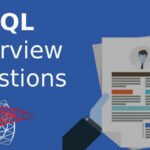Data Science, a multidisciplinary field at the intersection of statistics, computer science, and domain expertise, has become pivotal in extracting valuable insights from vast datasets. As the demand for data-driven decision-making rises, professionals in this field encounter a myriad of questions.
Let’s explore into some of these questions and unravel their solutions.
- What exactly does the term “Data Science” mean?
- What is the difference between data science and data analytics?
- What are some of the strategies utilized for sampling? What is the major advantage of sampling?
- List down the criteria for Overfitting and Underfitting.
- Distinguish between data in long and wide formats.
- What is the difference between Eigenvectors and Eigenvalues?
- What does it mean to have high and low p-values?
- When to do re-sampling?
- What does it mean to have “imbalanced data”?
- Do the predicted value and the mean value vary in any way?
- What does Survivorship bias mean to you?
- Define key performance indicators (KPIs), lift, model fitting, robustness, and design of experiment (DOE).
- Identify confounding variables.
- What distinguishes time-series issues from other regression problems?
- What if a dataset contains variables with more than 30% missing values? How would you deal with such a dataset?
- What is Cross-Validation, and how does it work?
- How do you go about tackling a data analytics project?
- What is the purpose of selection bias?
- Why is data cleansing so important? What method do you use to clean the data?
- What feature selection strategies are available for creating effective prediction models?
- Will reclassifying categorical variables as continuous variables improve the predictive model?
- How will you handle missing values in your data analysis?
- What is the ROC Curve, and how do you make one?
- What are the differences between the Test and Validation sets?
- What exactly does the kernel trick mean?
- Recognize the differences between a box plot and a histogram.
- How will you balance/correct data that is unbalanced?
- Random forest or many decision trees: which is better?
1. What exactly does the term “Data Science” mean?
Data Science is the amalgamation of scientific processes, algorithms, tools, and machine learning techniques aimed at extracting meaningful patterns and insights from raw data. The process involves data acquisition, cleaning, exploration, analysis, and visualization, culminating in the presentation of actionable insights to inform business decisions.
2. What is the difference between data science and data analytics?
While data science focuses on uncovering patterns and building predictive models, data analytics is centered around verifying hypotheses and answering specific business questions using existing data. Data science is broader, employing various mathematical and scientific tools, whereas data analytics is more focused, using statistical and visualization techniques for specific problem-solving.
3. What are some of the strategies utilized for sampling? What is the major advantage of sampling?
Sampling is crucial in data analysis, especially for large datasets. Non-Probability sampling includes techniques like convenience sampling, while Probability sampling involves methods like simple random sampling. The major advantage of sampling is its efficiency; it allows analysts to work with manageable subsets that represent the overall population, reducing computational load and processing time.
4. List down the criteria for Overfitting and Underfitting
Overfitting occurs when a model performs well on training data but fails on new data. It is characterized by low bias and high variance. Underfitting, on the other hand, results from a too-simplistic model that performs poorly on both training and new data, displaying high bias and low variance.
5. Distinguish between data in long and wide formats.
Data in long format organizes information in rows, reflecting a subject’s one-time data, while data in wide format organizes repeated responses of a subject into different columns. Long format is common in R analysis, while wide format is often used in statistics programs for repeated measures ANOVAs.
6. What is the difference between Eigenvectors and Eigenvalues?
Eigenvectors are column vectors of unit length, representing directions, while eigenvalues are coefficients applied to eigenvectors, indicating their magnitude. Eigen decomposition breaks down a matrix into eigenvectors and eigenvalues, commonly used in techniques like Principal Component Analysis (PCA).
7. What does it mean to have high and low p-values?
A high p-value (>0.05) suggests support for the null hypothesis, indicating that observed differences are likely due to chance. A low p-value (<0.05) rejects the null hypothesis, implying that the observed differences are unlikely to occur randomly.
8. When to do re-sampling?
Re-sampling is done to improve model accuracy and assess model performance using random subsets or tests with labels substituted on data points. It is particularly useful when models need validation through various patterns in a dataset.
9. What does it mean to have “imbalanced data”?
Imbalanced data occurs when the distribution of data across different categories is uneven. This can lead to performance issues in models and inaccuracies, especially in classification problems where one class significantly outweighs the others.
10. Do the predicted value and the mean value vary in any way?
The predicted value and mean value may vary in terms of application. The mean value represents the central tendency of a distribution, while the predicted value is specific to the outcome of a model, making it more relevant in predictive modeling scenarios.
11. What does Survivorship bias mean to you?
Survivorship bias refers to the logical fallacy of focusing on entities that survived a process while overlooking those that did not. It can lead to erroneous conclusions by neglecting critical information.
12. Define key performance indicators (KPIs), lift, model fitting, robustness, and design of experiment (DOE).
KPIs are metrics assessing how effectively a company meets its goals. Lift measures a model’s performance against a random choice model. Model fitting evaluates how well a model matches the data. Robustness refers to a system’s ability to handle variations, and DOE involves describing and explaining information variance under certain settings.
13. Identify confounding variables.
Confounding variables, or confounders, impact both independent and dependent variables, generating erroneous associations and correlations. They can lead to incorrect conclusions in data analysis.
14. What distinguishes time-series issues from other regression problems?
Time-series issues involve predicting and forecasting future values based on historical data, considering the temporal relationship. It differs from other regression problems by incorporating time as a crucial factor in data analysis.
15. What if a dataset contains variables with more than 30% missing values? How would you deal with such a dataset?
Dealing with datasets with more than 30% missing values involves either replacing them with appropriate measures like mean or median or removing the affected variables or rows, depending on the dataset’s size and the impact of missing values on the analysis.
16. What is Cross-Validation, and how does it work?
Cross-Validation is a statistical technique for assessing and enhancing a model’s performance. It involves dividing the training dataset into groups, training the model on different subsets, and evaluating its performance against each group in turn. Common methods include Leave p-out, K-Fold, Holdout, and Leave-one-out.
17. How do you go about tackling a data analytics project?
Tackling a data analytics project involves understanding the business problem, thoroughly examining and evaluating the data, cleaning and preparing the data, running the model, visualizing and analyzing the results, implementing the model, and validating its performance through cross-validation.
18. What is the purpose of selection bias?
Selection bias occurs when a sample subset is chosen without randomization, leading to a skewed representation that does not reflect the entire population. It introduces inaccuracies and impacts the generalizability of results.
19. Why is data cleansing so important? What method do you use to clean the data?
Data cleansing is crucial to ensure accurate and reliable insights. It involves detecting and correcting structural flaws, handling missing values, removing duplicates, and maintaining data consistency. Methods for cleaning data include replacing missing values, removing duplicates, and transforming variables.
20. What feature selection strategies are available for creating effective prediction models?
Feature selection strategies include filter approaches (Chi-Square test, Fisher’s Score, etc.), wrapper approaches (Forward, Backward, Recursive Feature Elimination), and embedded methods (LASSO Regularization, Random Forest Importance) that combine the benefits of filter and wrapper methods.
21. Will reclassifying categorical variables as continuous variables improve the predictive model?
Reclassifying categorical variables as continuous variables may improve the predictive model, especially if the categorical variable exhibits an ordinal relationship. It allows the model to capture the inherent order and enhance its predictive capabilities.
22. How will you handle missing values in your data analysis?
Handling missing values involves determining the impact of missing values, identifying patterns, and either replacing them with default parameters or removing them based on the size of the dataset. Common methods include mean or median imputation, deletion of rows or columns, or advanced imputation techniques.
23. What is the ROC Curve, and how do you make one?
The ROC (Receiver Operating Characteristic) curve illustrates the trade-off between true-positive and false-positive rates at various thresholds. It is created by plotting true-positive rates against false-positive rates. The area under the ROC curve (AUC) measures the model’s performance.
24. What are the differences between the Test and Validation sets?
The test set evaluates a trained model’s performance, while the validation set is a subset of the training set used to choose parameters and prevent overfitting. Both sets play crucial roles in assessing and refining the model.
25. What exactly does the kernel trick mean?
The kernel trick involves using kernel functions to compute dot products in a high-dimensional feature space, allowing linear classifiers to solve non-linear issues. It is particularly relevant in support vector machines (SVM) and other kernel-based algorithms.
26. Recognize the differences between a box plot and a histogram.
Box plots and histograms are tools for visualizing data distributions. While histograms display the frequency distribution of numerical values, box plots provide a summary of key distribution features such as median, quartiles, and outliers in a compact form.
27. How will you balance/correct data that is unbalanced?
Unbalanced data can be corrected through techniques like resampling, under-sampling, or over-sampling. Resampling involves working with multiple datasets to ensure model efficiency, while under-sampling and over-sampling adjust the sample size to balance data distribution.
28. Random forest or many decision trees: which is better?
Random forests, being an ensemble approach that combines multiple decision trees, are generally more robust, accurate, and less prone to overfitting than using many decision trees individually. They harness the power of multiple models to achieve superior performance.
In the dynamic world of data science, these questions and their solutions serve as guideposts for professionals navigating the complexities of data analysis, modeling, and interpretation. As technology evolves, the landscape of data science will continue to expand, creating new challenges and opportunities for those dedicated to unraveling the mysteries hidden within the data.



